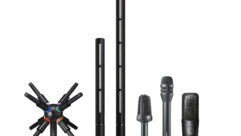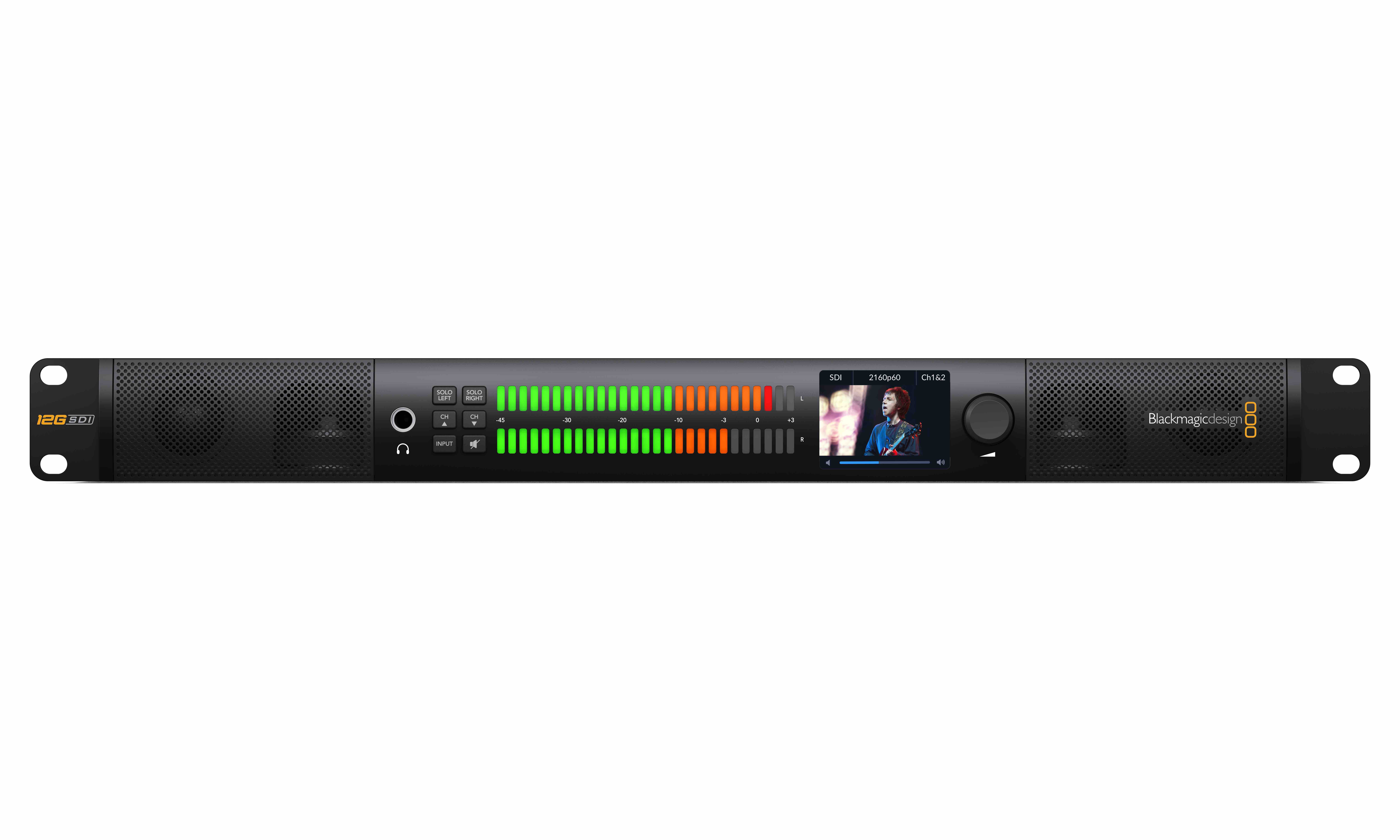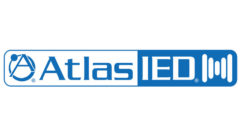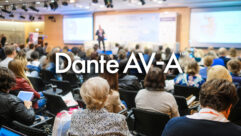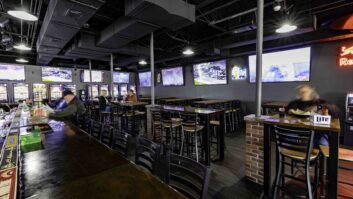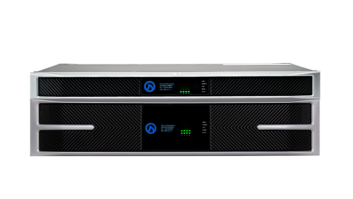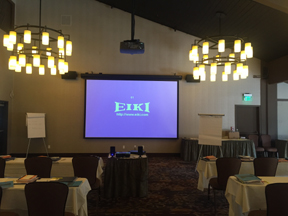
SVC Podcast – Show Notes – Show 167-2
In this edition of the SVC Podcast, SVC Contributing Editor Bennett Liles completes his conversation with Tony Sprando of Audio Visual Bend in Bend, Oregon on the complete renovation of the Riverhouse on the Deschutes hotel. Tony outlines the selection and placement of wireless microphone system antennas, projection and acoustics on the meeting and restaurant sides of the hotel.
For Part 1
Links of interest:
- JBL Control CRV speakers used in the sports bar area of the hotel
- RF Venue wireless microphone antenna systems
- JBL Control 29AV speakers used in the meeting rooms
- Auralex Sheetbloc sound insulation used to acoustically separate bar and meeting areas
- Eiki International projector
- Project Photos on Facebook
Download Podcast Here:
https://s3.amazonaws.com/nb-svc/public/public/167-2_Riverhouse_on_the_De…
This is the SVC Podcast from Sound & Video Contractor Magazine with Tony Sprando of Audio Visual Bend. Show notes and equipment links for the podcast are on the web site of Sound & Video Contractor Magazine at svconline.com.
The Riverhouse on the Deschutes hotel in Bend, Oregon got a complete renovation for its meeting areas and for a quite different ambient environment in its bar, restaurant and lounge. That called for Symetrix DSPs and JBL speakers. Tony Sprando is back to finish the story on how Audio Visual Bend got the job done. That’s right here on the SVC Podcast.
Tony, it’s great having back with us for Part 2 on the SVC Podcast from Audio Visual Bend in Bend, Oregon and we’re talking about the Riverhouse on the Deschutes hotel project. The place got a new owner and an extensive renovation for its meeting spaces and the bar and restaurant area. You had a lot to do on this one so how did you get started? What was the first thing you had to do once you got onsite?
Well, yeah. Well, thanks for having me back again. You know, we have different phases that we do in projects like this and when we come onsite initially we walk the site with a customer to figure out what they want this project to actually look at feel like when they’re done. So as we walked through it there was a lot of hard surfaces, there is a lot of open ceilings and exposed beams. So that’s what they want. They wanted that look and feel to stay the same. So we didn’t really have an option when it comes to starting with acoustics – that’s what we like to start with – to really put panels up and go down that road with them. So we had to have a conversation with them about what it would look like to place speakers in strategic locations that they’d be happy with. So that was kind of the first step is walking through placement of hardware and where it was going to fit because they were going to put new walls up. They were going to reallocate space for different parts of that hotel there. So that was kind of the first step and it came together pretty well. [Timestamp: 2:08]
How did you manage the sound system design in the lounge and bar area? I know that’s a much higher ambient sound level than across the way where they’re having meetings.
We chose JBL CRV speakers and their design allows for unique placement. So we were able to put these speakers on the beams and disguise them really to kind of make them fit right in, but also bring them down into the room at the same point. And using several of them in unique locations really helped to bring the SPL levels up to where they needed to be without changing the environment and the look and feel. [Timestamp: 2:46]
And you put in Audio-Technica wireless mics. That was on the meeting side.
That’s on the meeting side. That is correct, yes.
And how did you set up the receivers and antennas for that? Did you use remote antennas and an antenna distribution system?
So we used remote antennas. In that kind of design it doesn’t matter really what the manufacturer of the wireless microphone system is. We use a distribution system by RF Venue. And RF Venue’s are experts in distributing wireless mic antennas into spaces to provide equal coverage everywhere. So in that case we are running RG-8 cable to the meeting rooms and then we place their panel antennas in each room. These antennas are very unique, different that they actually carry both the panel and the actual antennas on the same antenna so you can run both cables up to it. So it makes the installation easier for the AV group as well as the wiring. It worked out really well. It made really good coverage and it’s compatible with the other manufacturers as well. So we chose Audio-Technica just because another part of the hotel uses Audio-Technica as well so we wanted to keep that all the same. [Timestamp: 11:14]
That’s probably a pretty smart thing to do. And you’ve got a central rack on each side instead of one handling everything?
Yes. We have a main AV rack and then we have AV rack 2 which is located near the bar area. Again, we’re putting all the distribution and everything for those two zones because the facility is spread out pretty far and we wanted to keep the control and all the wiring a little more local instead of having to run a lot of extra wire. [Timestamp: 4:27]
And it’s in a special rack room somewhere that only your guys can access.
That’s correct. Both locations are that way.
You’ve got some auto-switching in the meeting area. How do you find the general reliability of the auto-switching devices?
I think auto-switching is the way to go. In a hotel environment or a presentation environment you need to give the customer access to everything without having a mixer board and video switchers and all those types of things in the room. They need to be smart devices. So the audio as well as the video, audio follows video in our auto-switching systems so someone plugs and laptop in and has audio it’s obviously going to follow the video as well. And then when someone speaks in a microphone that is a live feed so it’s coming through all the time and they just, in the room with three-button Symetrix, they can actually just select that and go up arrow until the volume is at their desired level. So it’s very simple. We try to keep the buttons very, very simple. I think we have five local buttons total in each room that control all the AV systems. And they’re hard buttons so there’s no fancy touch panels and stuff for the end user. But the administration, the banquet servers and that kind of thing have access to an iPad that can actually override those in case they need to come in and do some advance changes. But the auto-switching piece is definitely key in all of this. It kept the control simple and it kept the frustration level down too; the learning curve. [Timestamp: 5:58]
For sure. And that’s a big thing. And in the meeting area you had a kind of a challenge fitting speakers. They couldn’t go in the ceiling.
For the meeting area we have two JBL 29-AV speakers and they are placed right and left of the projection screens. So yes, traditionally I like to fly speakers or put speakers actually in the ceilings, but because again they wanted open, exposed beam look and feel in those rooms that wasn’t going to fit in, especially with the chandeliers and their location. So we put some high-quality, high-wattage speakers in the front of the room and it pushes a nice, strong level of sound all the way through the room for each. There’s two rooms. There’s what they call Deschutes C and Deschutes D. Those are two meeting rooms. They have a divider wall and when you close that divider wall it actually combines or uncombines the room automatically as well. [Timestamp: 6:54]
We talked in Part 1 about some changes needed by the client? Did you hit any surprises as you worked through this?
No. You know, this job didn’t have too many surprises. We are located only 10 minutes from that job site so we stayed on that job pretty regularly. So there was no real major changes except for sometimes there was one thing that did come up. When the contractors started putting light fixtures in the rooms and they are not considering height, like maybe where our projection screen, our projector, needs to go, we did have to make some minor adjustments there. But that was not something that was a major deal breaker. We just had to move around that a little bit, but that’s why it’s important to use a local contractor as well because they can show up and stay onsite. [Timestamp: 7:38]
And it had to be an advantage being able to get in at the very beginning of this renovation project rather than have to come in and do a retro-fit.
Well that’s true, yeah. And that brings to mind there was one thing that did come up at the beginning during one of our walk-throughs and that is they were sharing with me their application for the meeting space after hours. They said we’re actually going to have a jazz concert in here on Friday nights. And I said well, one of your walls backs up to the lounge. And so I expressed to them the sound problem they’re going to have there. The lounge is traditionally quiet, right? And so when they’ve got this jazz band playing and they’re selling tickets, so they’re going to want to have it fairly loud. So we recommended before they put the sheetrock up to put what they call sheet block up first before they put the sheetrock up and that will actually block sound traveling into the lounge area on the other side of the wall. So that was one thing that put me in good graces with them because selling those tickets to the jazz concerts was a big deal in this town. Music is a big deal and it brings in revenue for them. So now they can actually use the restaurant and have it quiet and also have the concerts going on as well. [Timestamp: 8:44]
That’s great that you had the opportunity to make a basic change in the acoustics before the wall covering went up. So what’s coming up next for Audio Visual Bend?
Well, the new project that we’re working on is a fun one and the facility is called Worthy Brewing Company. And it’s a local brewery in town that actually brews beer and also has a dining hall. They wanted to expand to bring more people in so they asked a construction company to come in and go ahead and build an additional wing onto the building to include banquet facilities, additional bar and a mezzanine on the second floor and then on the third floor there’s actually a observatory up there, which makes it quite unique. So we were called to come in and consult with them and they chose our company to expand the distributed audio system into the new spaces for music playback in the mezzanine, the banquet hall and the additional bar area. But they also wanted us to be part of their design process for the observatory, which is very unique. So over here in central Oregon – Bend, Oregon – we have a pretty large following of those who like to go into a telescope and look at the stars and that kind of thing. The owner of the Worthy Brewing is also part of this group so basically he said I want to put this at the top but I want to stream live telescope viewing down to the main floor and to the other spaces. So that is something that we’re doing. That’s a very unique job for us; just something we don’t normally get involved in. But it’s going to look really good when we’re done and you should check back with us when we’re done. I’ll talk more about that. [Timestamp: 10:21]
A telescope streamed to the other areas of the building. That sounds like a unique project. Thanks for telling us about this one. Riverhouse on the Deschutes and that’s right there in Bend, Oregon.
That is in Bend, Oregon. That’s correct.
So you’re only a few blocks away, a very handy situation. It’s Tony Sprando with Audio Visual Bend and the Riverhouse on the Deschutes hotel AV project with meeting areas, bar, lounge and restaurant. Thanks for being here. Sounds like it went very well.
Yeah, it did. Thank you.
Thanks to Tony Sprando for getting with us on the podcast. Show notes and equipment links are on the website of Sound & Video Contractor Magazine at svconline.com. Be back with us next week for the SVC Podcast.



